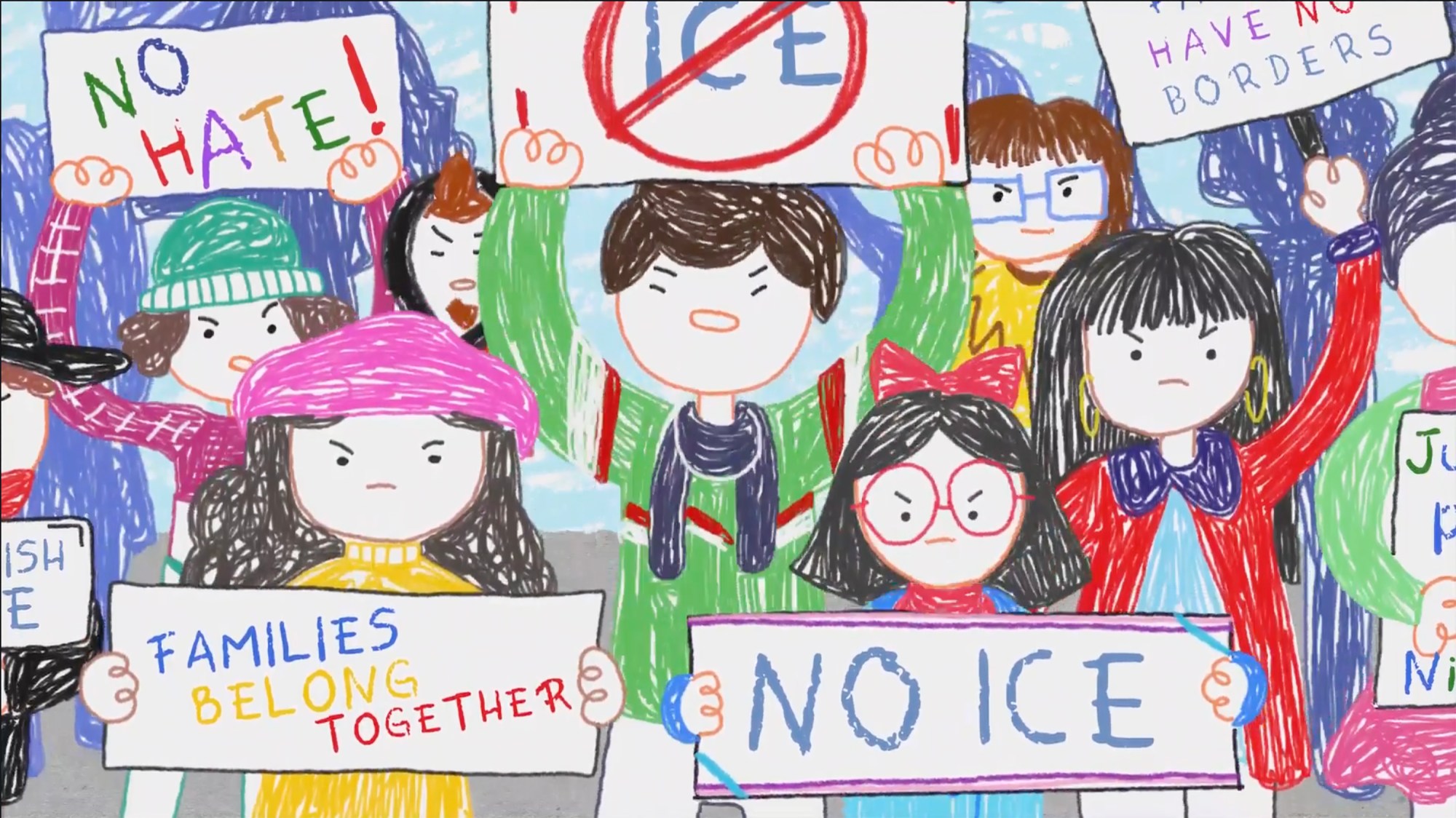
- Festivals
“Home Is Somewhere Else”: A Bold Choice of the Guadalajara Film Festival in Los Angeles
“We are the ones between dos mundos, time suspended on the shelves, where home is always somewhere else.”
– José Eduardo Aguilar “El Deportee”
The Guadalajara Film Festival in Los Angeles – an HFPA grantee – is intent on focusing on issues that especially beset the Latinx population. So, putting on an open-air showcase of Latin American films in the heart of downtown Los Angeles, at Grand Park, made sense.
The centerpiece screening, Home Is Somewhere Else, on September 30, brought forth the problem of unjust detentions and deportations and the clash of cultures to a small, but lively, engaged and mostly Latinx audience. “I fought to get this film,” Festival Director Ximena Urrutia said privately, fully aware of what it would have meant for this audience.
Mexican co-directors Carlos Hagerman and Jorge Villalobos combined documentary and fictional techniques in their “animentary,” which was comprised of these three tales in which the real-life protagonists spoke through animated characters.
In the first story, Jasmine, eleven years old, lives in fear of losing both of her undocumented parents when her father is detained and her mother threatened with deportation.
In the second, two sisters, Evelyn and Elizabeth, one living in Mexico and the other in the United States, miss each other while wondering whether they will ever be able to fulfill their dreams.
In the third, we see José Eduardo Aguilar, “El Deportee,” a Latinx activist who was brought to the United States as a child by his Mexican parents. He was deported to Mexico when he was twenty-three, and since then he has been able to express the conflicts of not belonging, living between cultures, being abandoned and unprotected through spoken-word poetry.
“For ten years, we have been using animation to tell these kinds of stories [about] social issues, sensitive issues,” said Villalobos in the Q&A after the screening.
“One of the most beautiful things about making such a project was to combine documentary and animation,” Hagerman added. “Whereas in a classical-style documentary filmmakers go shoot, do interviews, and then take all of that to the editing room … [with the ‘animentary’ things were] very different because we needed a lot more in order to be able to create what you saw.
“We would always call [the subjects] asking them questions like ‘What tennis shoes do you wear, Elizabeth?’ ‘Which is your favorite beach?’ Everything came out from real places and real relationships with things, people, sounds… I remember Evelyn going to record the sounds of the kindergarten school at her village… So it has been a reconstruction and a very collaborative process between the protagonists of the stories and ourselves. And this has enriched the project so much!”
Each of the three stories has a unique style. Jasmine’s story alludes to the dreamlike world of childhood and how innocence is confronted with unforgiving reality; the sisters’ segment captures the beauty of both the American and the Mexican cultures as seen through their budding femininity but also conveys a gnawing sense of uncertainty; El Deportee’s story looks and feels harsher than the other two, full of contrast and stark lines, exuding an atmosphere of danger.
“We decided upon the different graphic styles because of what we thought the stories were about,” explained Hagerman. For instance, “in the case of the tale of the two sisters we used [the art] of Aura Moreno Lagunes, who has spent all her life just doing portraits of women… When we saw her watercolors … we knew that there was something about her way of looking at things that matched this story.”
Evelyn and Elizabeth, the two sisters featured in the second story of Home Is Somewhere Else, spoke to the audience about their emotional reaction when they saw themselves turned into animated heroines.
“I’m just really grateful to have our story shared; I want people to know what it’s like to be an immigrant,” Elizabeth said. Watching the film for the first time, Evelyn felt like she “went back to being a child, experiencing again what immigration has done to [her] family”. For her, watching the film was “overwhelming but, at the same time, it just felt good to talk about one of the major problems we have in this world.”

